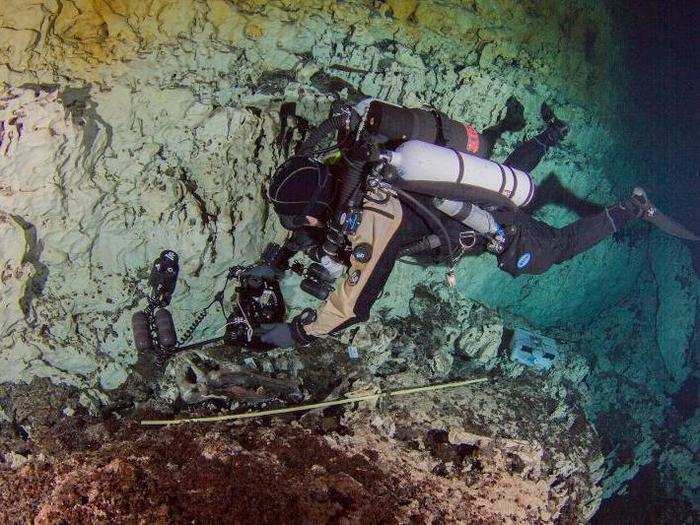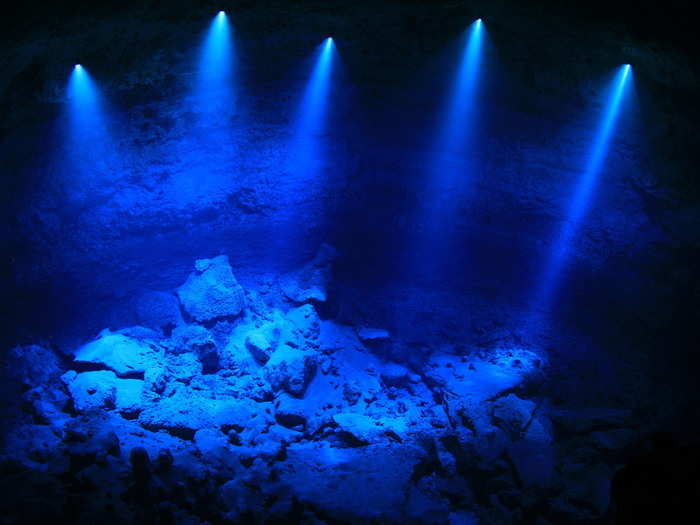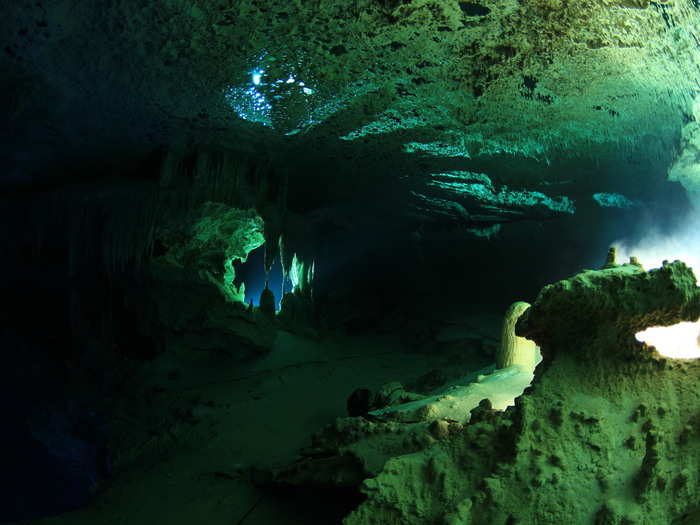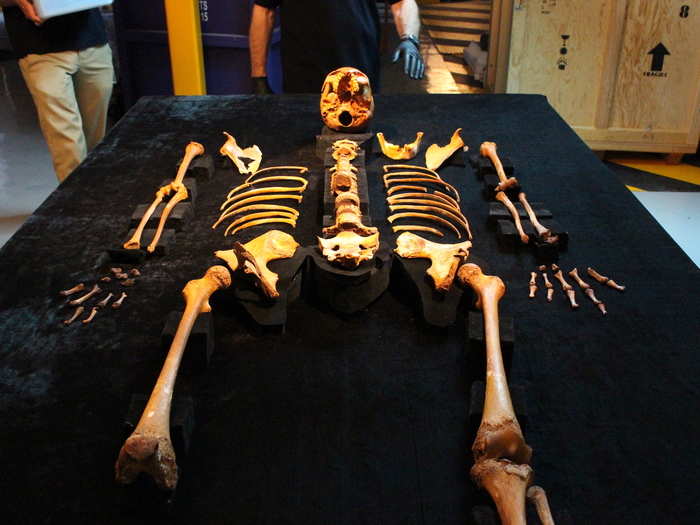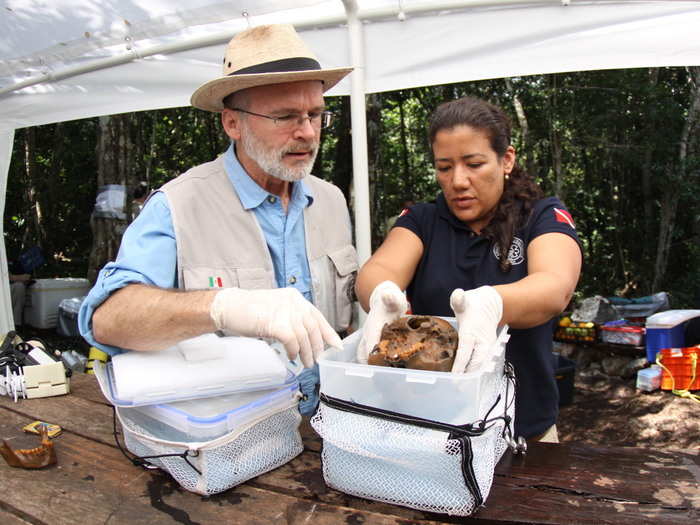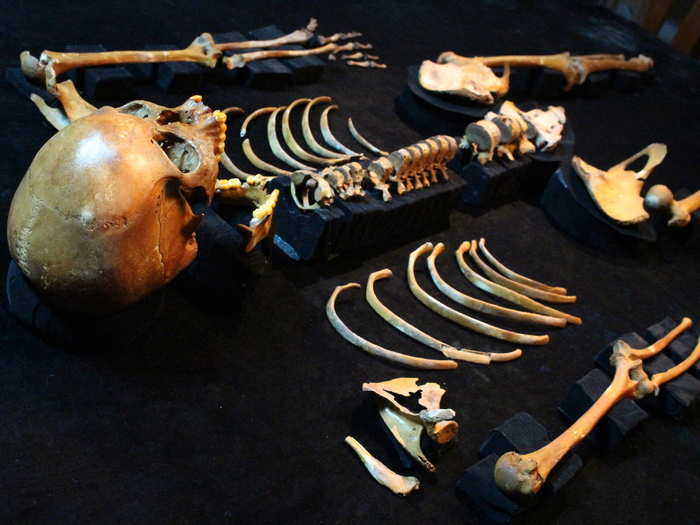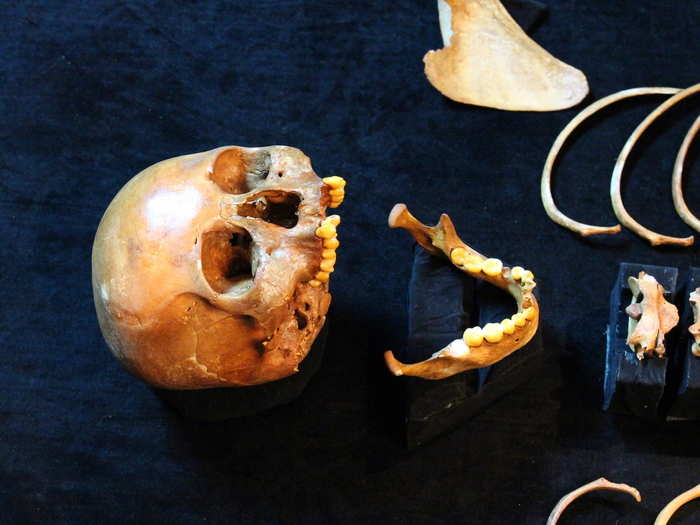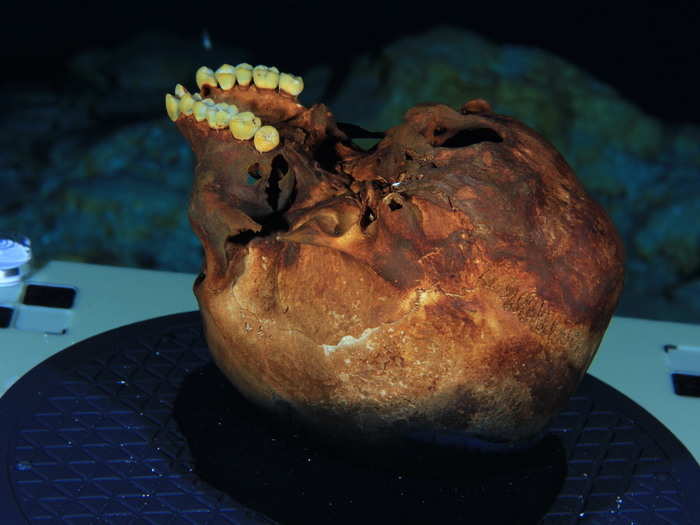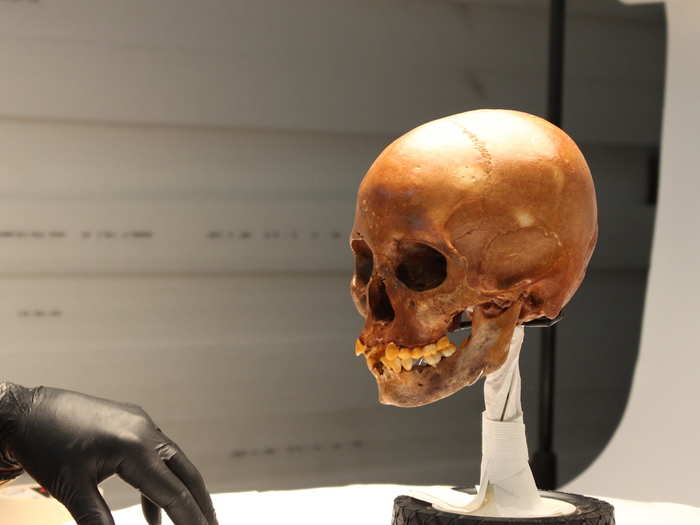This led the team to conclude that Naia and her group were probably new arrivals to the area and ill-equipped to survive.
Further DNA analysis of Naia's skeleton shows an even more astonishing find. Naia is directly related to 11,000-year-old graves excavated by anthropologists and archaeologists in Alaska.
Researchers think this means that the entire population of Native Americans, from the tip of South America to the Arctic, are descended from the same population of intrepid hunter-gatherers who crossed a land bridge from Siberia thousands of years ago.
By reconstructing Naia's life, researchers hope to gain a critical window into understanding the lifestyles of the earliest Americans.
Naia represents a huge milestone in the decades-long effort to understand where Native Americans came from — and the history of North and South America.
You can stream the documentary now on PBS.

